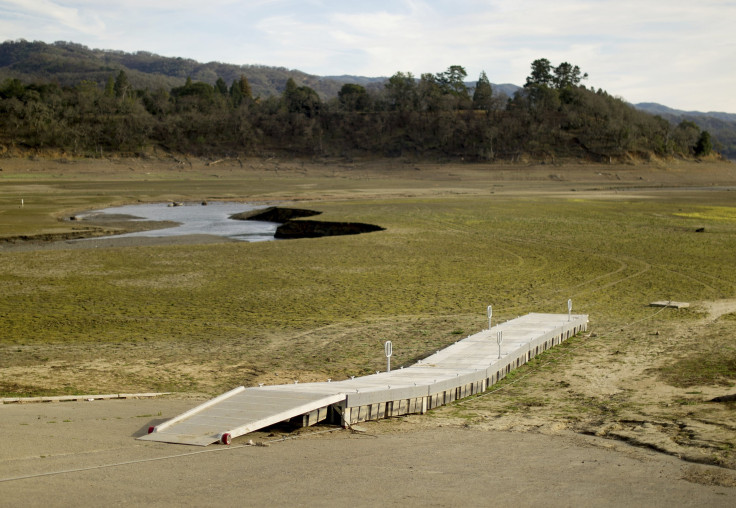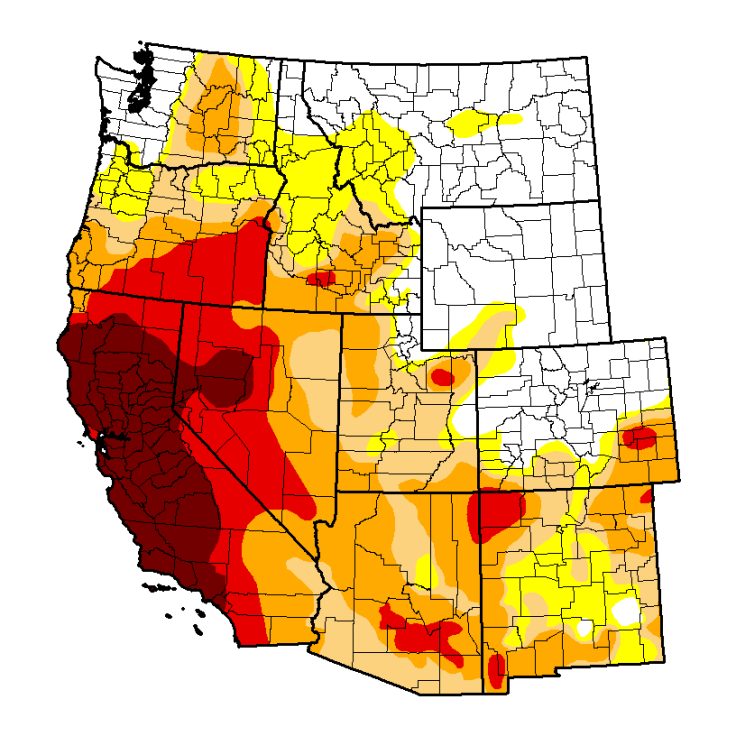California Drought Crisis 2014: Massive Groundwater Loss In US West Is Causing Earth's Crust To Lift Like An 'Uncoiled Spring'

The drought-stricken U.S. West is guzzling so much groundwater that the Earth’s crust is starting to “rise up like an uncoiled spring," California scientists said on Thursday. In some places, the Earth has lifted by more than half an inch.
Using data points from hundreds of GPS stations, researchers found that nearly 62 trillion gallons of groundwater has disappeared in the past few years, according to the Scripps Institute of Oceanography at the University of California at San Diego. That’s about how much ice is lost from the Greenland ice cap each year because of global warming, the Los Angeles Times noted.
The Scripps team found that the water shortage is causing an “uplift” effect on the tectonic plate that supports the western region. In California’s mountains, the crust has sprung up by 0.6 inches since the start of 2013, while the rest of the region lifted by about one-seventh of an inch. The uplift was less in Nevada and the Great Basin.
Most of the 11-state region has experienced varying degrees of drought over the past year, with unusually hot temperatures and low rainfalls this summer exacerbating conditions. California is hurting the most, with nearly 60 percent of the state in an “exceptional drought,” according to the U.S. Drought Monitor.

While groundwater losses pose a threat to agriculture and public health, the rising crust doesn't seem likely to trigger any seismic activity, Duncan Agnew, a geophysics professor at Scripps and co-author of the study, said. “The uplift has virtually no effect on the San Andreas fault and therefore does not increase the risk of earthquakes,” according to a statement.
Results of the study, which was supported by the U.S. Geological Survey, appeared in the online edition of the journal Science on Thursday.
Across most of the West, drought levels are expected to persist or strengthen through the fall, federal climate scientists said this week. Above-normal temperatures are similarly likely to hang around, though some parts – particularly the Pacific Northwest – could see medium precipitation levels.
An El Niño event in the Pacific Ocean is unlikely to bring much relief to California, Anthony Artusa, a meteorologist and seasonal forecaster at NOAA’s Climate Prediction Center, told reporters on a Thursday press call.
The center gives El Niño a 65 percent chance of appearing in the late fall or early winter. During an El Niño, warm waters and rain-bringing clouds typically move from west to east, potentially causing drought in Asia and Australia and dumping rain on the Americas. But Artusa said the El Niño pattern will likely be too weak to stir up this kind of activity.
“For California to see much (drought) relief – especially in the south – that would require a pretty strong El Niño, with a southern jet stream running through that region, and we just don’t see that happening right now,” he said on the call.
© Copyright IBTimes 2024. All rights reserved.




















